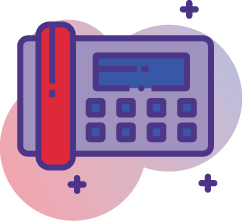
Warren has a habit of overreacting to situations. He goes from zero to 60 in two seconds. Instead of ignoring this sudden outburst and giving him a few seconds to realize he overreacted to the situation, I am often guilty of telling him to “calm down.” For the record, that is NEVER the right thing to say to someone.
Instead, I should reinforce the skills on how to stay calm in a stressful situation for him and me. A few moments of silence are helpful for us both (allowing us to calm down) too. Maybe Warren can learn not to overreact, I can learn not to overreact by telling him to calm down immediately, and perhaps we can have fewer arguments about it too .
It’s really easy to say, calm down. It’s really hard to keep calm in the middle of a stressful situation. It’s just not easy to do. Telling someone to calm down does not help them calm down.
[ctt template=”3″ link=”lU6p0″ via=”yes” ]It’s really hard to keep calm in the middle of a stressful situation. Telling someone to calm down does not help them calm down.[/ctt]
So, I have a few tips on how you can remain calm as much as possible in stressful situations. Maybe those are highly emotional times when you’re at a wedding or a funeral. Perhaps those are highly stressful times when someone is yelling at you at work, or you’re losing your job, or you have a different opinion on a situation. Maybe there are stressful times when you have to make those tough decisions that are never easy to make. Regardless of what the situation is, we need to be able to stay as calm as completely possible.
1. Take a deep breath. When Warren overreacts, I need to take the time to take a calming, deep breath before I tell him to calm down. I’m overreacting the very same way he is, only for a different reason. If I slow my reactions down and take a deep breath, I’m willing to bet that I won’t tell him to calm down.
When we take a deep breath, we trigger the body to stop releasing stress hormones and begin the relaxation response. The 4-7-8 breathing technique works well to calm me down quickly.
– Take a deep, slow breath from your stomach, and count to four as you
take the breath
– Hold your breath for a count of seven
– Release your breath as you count to eight. Get all the air out of your lungs
– Repeat until you feel calm
If Warren and I are in traffic and he yells at the car in front of him, I can spend at least the next 20 seconds (that is just one round of deep breathing, and I typically need a few to calm myself down) taking only one deep breath instead of yelling at him to calm down. That allows me to pause the situation, enable him to calm himself, and avoid an argument because we are both overreacting.
2. Wiggle your toes. I know this sounds insane. Do it right now. When you concentrate on wiggling your toes, you cannot focus on anything else because you cannot wiggle your toes subconsciously. When you are focused on the wiggling, you aren’t focused on what has caused you to overreact.
I use this trick in emotional situations where I’m trying not to cry (weddings, funerals). It doesn’t stop the tears, but it does stop the ugly cry. It keeps me focused on something else, which allows me to avoid overreacting. It helps me calm down (and giggle a bit too).
3. Stand if you can. Clearly, that isn’t always an option (for example, when you are in the car), nor is it always suggested.
If you’re having a very heart-to-heart conversation with your boss and you stand up in the middle of the conversation, it’s going to look very aggressive, so don’t stand up. However, if you’re on the telephone and you’re having a critical conversation with one of your kids or with a family member, you can stand up. They can’t hear that you’ve stood up, and it will allow you to remain calm.
Standing up delivers full oxygen flow through your body. You want the oxygen to go from your brain down to your toes. It also allows you to feel more in control of the situation.
4. Find something to agree on. This morning Warren’s computer wasn’t allowing him to send emails. Understandably, he was frustrated and expressing his frustration verbally. I was writing this article, so it was top of mind to avoid telling him to calm down (which I’m sure he appreciated). Instead, I said, “Yuck. That is the last thing you need today. I hate when email does that.”
I didn’t argue back, nor did I tell him to relax as it isn’t a big deal. I didn’t jump in and give him ten things to check immediately. I showed some compassion and agreed with him that his situation was frustrating. I validated his frustration. I didn’t speak condescendingly because I completely agreed that it is frustrating when email doesn’t work the way we expect. Suppose the situation was different, and Warren complained about the snow flurries later this week, and I had responded about how annoying it is that it snows in Canada. In that case, I agree with his complaint but I’m being condescending in my comments. That isn’t helpful.
5. Focus on the situation, not the person. The last thing that Warren needs to hear is, “You always overreact. Look at what you are doing now, yelling at a stranger, and they can’t even hear you.” He doesn’t need to be told to calm down, and he doesn’t need to be told the problem is “him.”
Instead, focus on the other person’s behavior, or the specifics about the situation, and not on the person over reacting.
[ctt template=”3″ link=”QvJ2a” via=”yes” ]When the situation is stressful, focus on the other person’s behavior, or the specifics about the situation, and not on the person over reacting.[/ctt]
Staying calm takes work. It is work not to overreact, and it is work to avoid telling others to calm down. Stressful situations happen. Staying calm is up to you.









